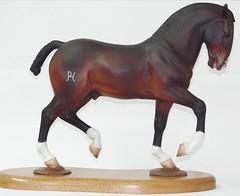The Knoxville Zoo African elephant that fatally injured one of her keepers will not be punished as multiple agencies begin to investigate what zoo officials call a tragic accident.
Elephant keeper Stephanie Elaine James, 33, died from internal injuries she suffered Friday afternoon when a zoo elephant named Edie pushed her into the heavy metal bars of a stall inside the pachyderms’ barn. At the time James and another keeper had been attending to the elephants for the evening.
In the incident’s aftermath, visibly shocked zoo officials are working to determine what happened, to remember their co-worker and to provide solace to others on the park staff. Knoxville Zoo Executive Director Jim Vlna, in a press conference this afternoon, expressed deep sorrow at James’ death as he detailed plans to review the incident.
“This is a very difficult day for all friends and colleagues of Stephanie, who was a respected and admired member of the Knoxville Zoo family,” Vlna said.
More than 30 zoo keepers and staff members, having heard about the 2 p.m. conference, came to listen. The zoo provided a chaplain Saturday to offer counseling for staff members.
A number of agencies and the zoo are investigating what happened. The Tennessee Wildlife Resources Agency and the Tennessee Occupational Safety and Health are investigating as well as the United States Department of Agriculture and the Association of Zoos and Aquariums (AZA), which oversees the accreditation of zoos. Vlna said that currently all the organizations are conducting independent looks into the incident.
The zoo is establishing an independent review panel that will include an AZA representative as well as a representative from the University of Tennessee College of Veterinary Medicine. The zoo is contacting an elephant expert to serve on that panel.
The zoo immediately changed the way its other four elephant keepers care for Edie, 26, and the other female elephant, Jana. Now both will be managed in what’s called “protected contact.” That means the keepers will tend the animals through protective barriers such as bars. Before elephant keepers cared directly for Jana and Edie in “free contact” without any barriers.
The findings of the zoo-established panel will decide if and when that protected contact is lifted and how the pachyderms will be handled in the future.
Edie will not be punished or disciplined, Vlna said. The zoo elephant training program “is based on positive reinforcement,” he said.
A fund for James’ family has been set up at Clayton Bank and Trust. Clayton Bank and the Clayton Family Foundation made the first contribution of $2,500 to the fund. Vlna said the zoo is also donating. Contributions may be made at any Clayton Bank. James, 33, is the daughter of Ron and Kris James of Indianapolis, Ind.
While details of exactly how James was injured remain sketchy today, Vlna said she and a male keeper working with her followed all the park’s standard protocol in dealing with the 8,500-pound animal. James was standing at the elephant’s head when Edie pushed her.
The other keeper immediately commanded Edie to move away. The elephant obeyed that command and was placed in another stall. The zoo’s security staff and First Responders were called; James was taken to the University of Tennessee Medical Center. “Stephanie was given the best care we could possibly give her,” said Vlna.
James, who had worked with the zoo’s elephants for two years, died at the medical center.
Zoo officials declined to identify the other keeper working with Edie, saying other keepers are devastated by the loss of their co-worker. “We want to protect their privacy and emotions as much as we can at this point in time,” Vlna said.
The park’s elephants were not on outdoor exhibit because of the cold weather, but the public indoor viewing area in the barn at the Stokely African Elephant Preserve was closed due to the accident. The elephants, Vlna said, “know something has happened.”
Vlna said this is the first serious injury to a keeper at the park. “We have a very clean record.”
Courtesy of Wayne Jackson
I don't note any statements from the Knoxville "spokeswomen", which might be a good idea, given the bonehead statement quoted yesterday.















